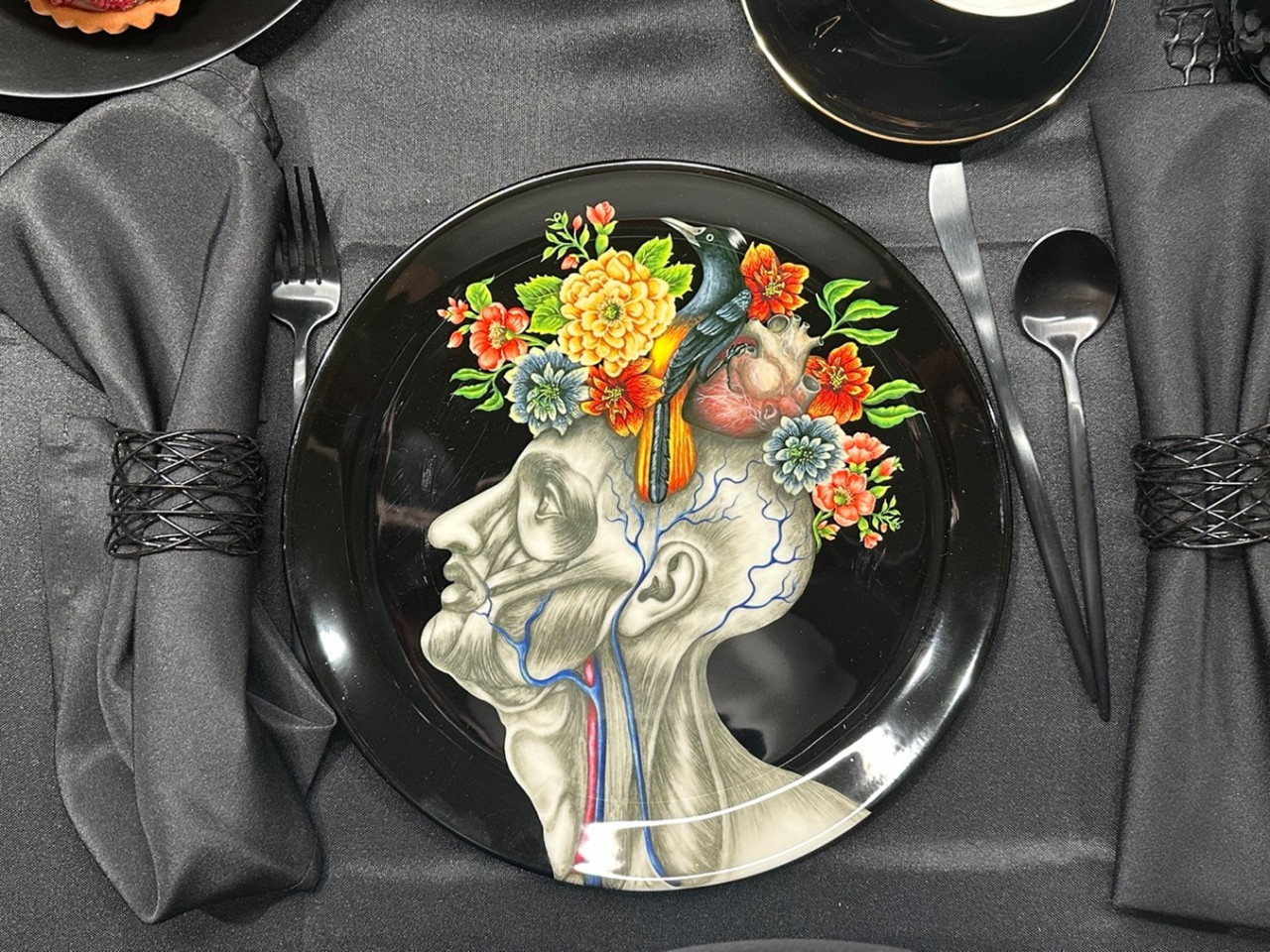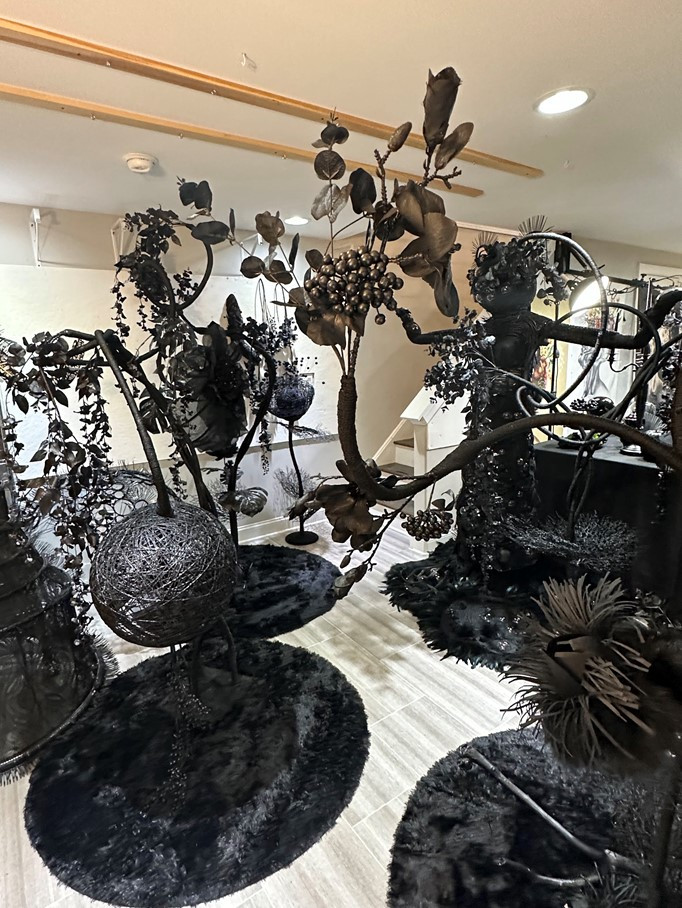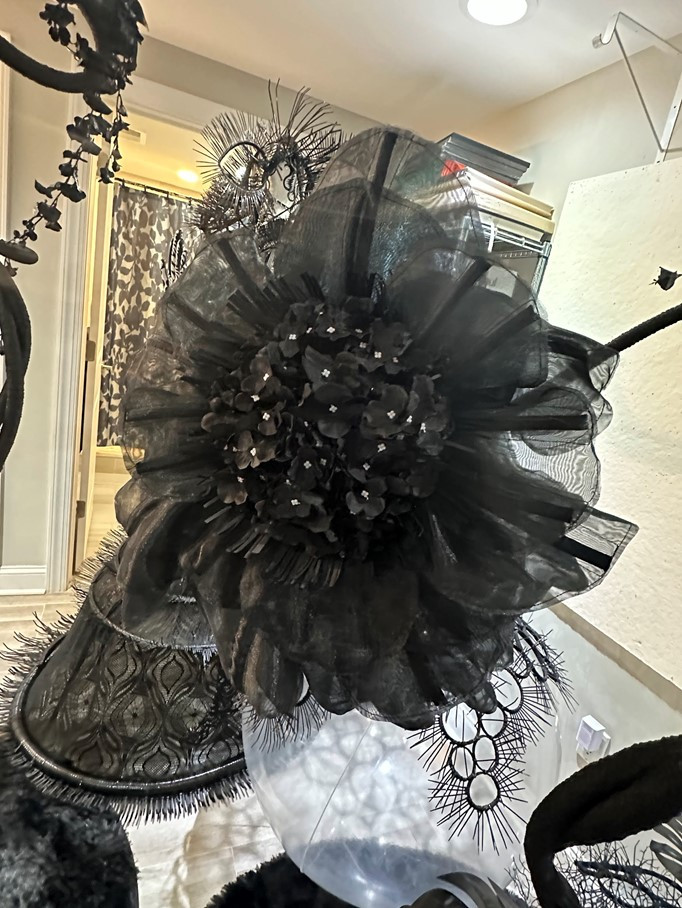
Heather Ujiie is an associate professor at Moore with unique interdisciplinary expertise—she teaches in multiple programs at the College, including Fashion Design, Foundation, Interior Design and Textiles. In addition, she’s an extremely prolific and nationally and internationally exhibiting artist, and we’re proud to say that she was just featured on the cover of NJ Lifestyle Magazine! Next up, Heather’s work will be on view in an upcoming exhibition at the Hill-Physick House in the Society Hill neighborhood of Philadelphia, opening in November.
Read on to learn more about Heather!

What’s your earliest memory of being creative or knowing that you wanted to do something creative with your life?
I grew up in a family of artists, so I was surrounded by the process of artmaking. Both my parents were painters and showed their work in SoHo in New York City in the 1970s, before Chelsea became the cornerstone of the New York art world. My father was an abstract expressionist, studied with Hans Hoffman and was part of the New York School of Expressionism in the mid-1950s. Later, he taught at Pratt and Brooklyn College.
Although I have a formal education in art and design, I am indebted to my father for his immense library of art books and our never-ending discussions on philosophy, art and life. My childhood was like a continuous exploration of the “exquisite corpse” surrealist game, and I was taught by my parents to question the status quo and to always seek out truth. A pivotal moment occurred when I visited the Metropolitan Museum’s Cloisters at 11 years old and I discovered the Unicorn Tapestries. It was the magic of the medieval textile tapestries which led to my love of flora and fauna, and large-scale textile panoramic landscapes.
Who is the artist or designer who has influenced you most and why?
I see the world around me as a fluid pool to draw from, through our shared diverse cultural histories. Fashion, interior design and the entertainment industry offer a wealth of visual inspiration in terms of style, color and material innovation. I appreciate the contemporary art world and make a point of attending art fairs and exhibitions in New York City and beyond.
Artists such as Wangechi Mutu, Firelei Báez, Nick Cave and Shahzia Sikander are just a few of the many diverse international artists whose work inspires me. There is no one artist who has influenced my work, but rather it is the contextual ideas around their work that have inspired further investigation. For example, the artists that I gravitate towards are exploring issues around intimacy, identity and gender. Many of my figurative narratives depict culturally diverse, nonconforming identities. My work embraces biodiversity and nature studies, while indirectly addressing climate change. I love sci-fi and fantasy and am always visually alluding to fantastic otherworldly environments, monsters and hybrid creatures.
Being creative, for me, is about studying the world around you—reading stories, listening to music, analyzing scientific discoveries and learning about historic global culture. How we “study” or interpret our world makes us better artists, and finding one’s own original voice takes critical thinking, courage and risk. It is also important to find a local community where you can identify and share your stories. Artists and designers need time alone for their studio practice, but we also need each other for bouncing off ideas, stumbling in the dark and laughing at our own anxieties.

What’s the most interesting thing you’ve done recently, professionally or otherwise?
I was recently awarded an Edna Andrade Grant to design a site-specific textile installation in the dining room of the elegant neo-classical Hill-Physick House Estate in the Society Hill neighborhood of Philadelphia. The Hill-Physick House was the home of Dr. Philip Syng Physick, a graduate of the University of Pennsylvania and Royal College of Surgeons of Edinburgh. Dr. Physick became one of the foremost physicians in the 19th century and is known as the father of American surgery.
The estate houses a special room with all of Dr. Physick’s innovative surgical tools, as well as a magnificent foyer, dining room and bedroom. I was granted freedom to create a site-specific art installation in any room, without damaging the antiquities or historic artifacts. I selected the dining room, and I am creating a “dark forest” otherworldly environment that references a kind of gothic Alice in Wonderland/Mad Hatter tea party. Everything I have designed is all black, devoid of color, except for the digitally printed plates, which have my original illustrations of body parts inspired by 19th-century medical and botanical illustrations. The table setting will have all kinds of paraphernalia that relates thematically to memento mori, cabinets of curiosities, operating tables and refined luxury. Three seven-foot-high black fiber-art/fashion figures will be installed in the space, wearing black sequined corsets and bird masks that look like medieval plague doctors. My goal is to make the entire room a dark, enigmatic dreamworld, where the viewer can be enticed into exploring its mystery. My site-specific installation will open in the first week in November.

What is it like in your classroom at Moore? How do you incorporate your experience with textiles into the Fashion studios?
I always try to establish a supportive and open studio, where students have weekly informal group dialogue in critiques, and I encourage students to share and talk about their work. Talking openly with others about your creative process is very important and instills confidence and openness to risk-taking.
My favorite courses to teach are Textiles electives, which are grounded in my specialization. Textiles are ubiquitous and they encompass knit, fiber, weave and print design. Textiles can be both functional and non-functional objects. I taught my Art to Wear Fashion Design studio course last semester, which is offered to all majors as an elective. Students kept Adobe Express blogs, did historic and contemporary visual research, experimented with material investigations and had weekly textile-building technique workshops. We had fun making a “mess” that led to the most amazing work at the end of the semester.
I also teach Drawing & Painting Into Pattern, a Textiles print design elective, which appeals to both Fashion Design and Fine Arts students, since it teaches skills in motif repeat-making for wallpaper, apparel and product design. My 15 years of professional textile industry experience affords the expertise to teach different types of repeat structures and textile-painting techniques. Students learn both analog and digital skills, and at the end of the course, they can design wallpaper for an art installation or print designs for apparel. A few years ago, one of my students designed a textile print which was digitally printed and wrapped around our school van!
I always say my students keep me young, hip and current, and it really brings me joy to help them reach their full potential as artists and designers.
If Moore had a mascot, what would it be?
I love that Moore educators encourage our students to become powerful and successful entrepreneurs, artists and designers. I think our students could identify with a superhero, one that represented a powerful warrior entity with superpowers and magical abilities to help others, to make the world a better place, and to conquer evil.

Portrait of Heather courtesy of James Oliver Gallery. Artwork photos courtesy of Heather Ujiie.
